The lead conversion process is a critical component of any business's revenue stream, enabling them to turn prospects...
Salesforce Maps Isn't the Only Way to Combine Your CRM Platform With Mapping Software Built for Sales Teams
Today's sales teams use a variety of tools to manage their data and support their operations. At the center of everything sits a customer relationship management (CRM) platform, such as Salesforce, that captures, stores and organizes information about clients and leads.
But to bring that information to life, an innovative sales team needs to connect their CRM to specialist third-party apps. Mapping software is an excellent example of a tool that can make a CRM like Salesforce even more powerful for sales and sales ops managers, allowing you to visualize customer and sales data to support quicker, better decision making.
Salesforce is the CRM market leader, used by more than 150,000 businesses worldwide. It ranks first for sales, productivity and CRM capabilities.
If your sales team uses Salesforce, integrated maps are a must-have. They'll give you and your sales team the power to instantly access all your key Salesforce data in an intuitive format. A good Salesforce map integration can be a game-changer for field sales, supporting better customer service, revenue and efficiency.
Why Use a Mapping Tool With Salesforce Data?
Your CRM is one of the most impactful tools in your sales toolkit. This powerful platform provides your sales team with a wealth of essential information, such as:
- Your current customer contacts
- The details of their accounts
- Reports on customer activity
- Other leads and opportunities your sales team captures along their routes
All of this data is critical to your customer service capabilities, as well as your sales process efficiency. But too often these details are siloed away. Keeping them separate from your mapping software creates additional steps and more work for your employees.
Benefits of Salesforce Map Integration
There are a number of advantages that you and your team will notice once you successfully integrate your chosen Salesforce mapping tool, including:
- Seamless access: Salesforce integrations give you and your sales team access to an all-in-one mapping tool, combining the knowledge and insight of your CRM with the power of your sales territory mapping solution. Once set up, you'll be able to seamlessly switch between your full Salesforce CRM and your mapping software.
- Directly add data: With map integration, it's an easy process to add data from Salesforce to your mapping software. CRM data sources like your contacts, customer accounts, leads and opportunities, reports, and custom objects can be directly added to your mapping software. You can also choose to add external mapping data or data sources from Excel to ensure that you have everything your team needs in one place.
- Improve decision-making and prioritization: Sometimes it's difficult to see which accounts need immediate attention and which leads could benefit from in-person sales support. Access to maps and analytics in Salesforce helps eliminate these challenges while enabling you to maintain efficiency in your field sales process.
- Salesforce territory mapping: Speaking of prioritization, decision-making around territory planning is a breeze when you and your sales reps have access to your critical CRM and mapping software data in one, completely integrated solution.
- Deliver best-in-class customer service: Integrating mapping software with Salesforce builds on the capabilities of the CRM, enabling you to elevate your customer service across the board. At the same time, your software provider should deliver the same level of customer service to help you find the answers and solutions you need.
A Salesforce mapping integration empowers your field sales reps, providing them with the access and features they need to better manage their time, prioritize their work and enhance sales process efficiency. That's how eSpatial's Salesforce integration works.
Get All the Great Features of eSpatial Within the Salesforce Platform
eSpatial for Salesforce is built to give you the full power of a complete mapping, territory design and route optimization solution within your Salesforce Org. With seamless data loading of common Salesforce objects — such as Leads and Opportunities, as well as Custom Objects — geographically visualizing and analyzing your data could not be easier.
eSpatial is renowned for features like territory management, heat mapping, proximity analysis and sharing of maps. Not only are all of these still included, but we've even added in some extra features just for the Salesforce user. Log calls, events and tasks, and use our much sought-after map templates which will facilitate an easier roll out among your team.
All of these features are easy to use and fast, saving you hours and even days of planning on the traditional Salesforce platform. Empower your team with the tools to manage their day, optimize their time in the field and update Salesforce on the go with eSpatial.
eSpatial in Salesforce - a Comprehensive Mapping Solution
eSpatial for Salesforce is different from all other mapping solutions available in the Salesforce AppExchange. We offer the full eSpatial experience within the Salesforce platform - three powerful solutions, including mapping, territory optimization and route planning. Plus, you get all of eSpatial's innovative and powerful features to analyze your business data and communicate your findings to your colleagues.
eSpatial features include:
- Territories – Create, balance, optimize and align territories based on location intelligence or account points. Collaborate on territory management with hierarchies, sharing and exporting features. Balance on any data metrics, combination of metrics and work index. Manage and update your Salesforce territory alignment directly from eSpatial.
- Routing – Plan, optimize and share trips with start and stop times. Export route legs to Google Maps and export stops to CSV.
- Map types – Visualize and analyze your data using multiple map types including: pin, radius, drive time, bubble, hot spot and regional heat maps.
- Data styling – Customize every part of your map from the pin size, color and shape, to the basemap your pins sit on.
- Collaboration & sharing – Create, save and share maps to collaborate with other users. Export maps to PowerPoint, PDF, JPG and CSV, and publish them via a public URL or embed them on your website.
Seamless integration
One of the biggest benefits of eSpatial for Salesforce is that you have direct access to your Salesforce data within eSpatial.
You can import any records that you have access to within Salesforce. eSpatial follows the same permissions laid out by your Salesforce admin for different users. For example, you can filter the data before importing so that you always have an up-to-date map of this month's opportunities.
You can also create a new Salesforce record from within eSpatial. This is particularly useful when sales reps are in the field and come across a prospect. They simply drop a pin on their location and create a new lead from the information pop-up box.
Salesforce records can be updated from within eSpatial as well. You can update any of the fields for that record from the information pop up.
Enhance analysis with non-Salesforce data
Using eSpatial for Salesforce does not mean that you are limited to using only data that exists within your Salesforce Org. You can easily upload data from many other sources such as ERP or POS systems as long as they are in an Excel or CSV format. Many of our users overlay their Salesforce data with non-Salesforce data such as demographics, company lists, competitors, potential sites, or points of interest to enhance their analysis and improve decision-making.
Demographic – eSpatial has a library of over a hundred boundary and demographics datasets for you to use in your analysis. Whether you're looking at population, gender, income, housing or more, you can find a dataset to help highlight gaps and opportunity in your markets.
Points of interest – This is particularly useful for field sales reps who are prospecting within their territory. The eSpatial business search allows you to look for a brand or a type of business, showing up to 20 results. Then, you can add them to a table to export to CSV. You can also add these businesses as new leads to Salesforce.
Rapid roll-out of maps
We've made the adoption of eSpatial across multiple users much easier in Salesforce with the introduction of map templates. Rather than creating lots of the same maps with different views of data for each user on your account, you can now create a template that displays only leads, contacts and opportunities on your map. It's just like creating a regular map, but you just share it as a template to others instead.
Create map – Set up your map by importing the data that you want to display.
Style map – Make your data easy to understand with different size, color and shaped icons for each data set. Add labels to give further information on the pins at a glance. Add an annotation with instructions on how to use the map. Add your logo in another annotation so that your users know it's your organization's map with your organization's branding.
Share as template – Share your map as a template to specific users, groups of users or the entire organization. The users you have shared the template with will be notified within the workspace and by email. The templates can then be found in the Shared With Me section of their Library.
Open in new workspace – When your users open the template in their own workspace, it will create a new map for them. On this map, they will see only the leads, opportunities, contacts and accounts assigned to them, so each user gets a custom map ready to analyze and use.
Salesforce actions from map
One of the great features of having eSpatial embedded in Salesforce is that you can take Salesforce actions from within your map, making life on the road easier for field sales reps. You can do the following, all from within your map:
Log a call, task, or event – From a single point on a map, you can keep Salesforce records up to date by logging calls, tasks or events.
Bulk update or reassign records – You can bulk update Salesforce records from within a map by using a hand drawn polygon or a boundary, such as a territory or region. You can also reassign records to new owners quickly and easily during staff changes.
Add records to a campaign – If you're running a marketing campaign or an event based around a geographic location, you can run a radius or drive time buffer around a center point and add all records that fall within that zone to a Salesforce Campaign.
Create new Salesforce records – If you're adding new non-Salesforce points to your map, you can create new leads from these points. This is a particularly useful prospecting tool.
Give non-Salesforce users access to maps
eSpatial exists as a standalone mapping solution as well as one embedded within Salesforce. This means that you don't have to limit usage to your licensed Salesforce users. You can give an eSpatial account to people within your organization who don't have a Salesforce account. These are likely to be analysts or even marketing teams that don't deal with the CRM on a day-to-day basis.
Salesforce Blog Articles
For the modern sales team, competition has never been fiercer. It seems like every organization is looking for new ways...
Ask any sales professional and they'll tell you that location intelligence is a must-have integration in their tool...
Modern sales teams rely on digital maps to visualize their sales data, but that shouldn't mean you have to learn...
Salesforce is a popular tool among organizations of all industries, and countless sales teams use its mapping...
Salesforce has become a definitive leader in the customer relationship management (CRM) platform space, taking up 22.9%...
Salesforce has become a titan in the world of cloud computing and business data, consistently ranking as the number one...
Sales territory planning was once a tedious process that involved ops teams manually organizing and connecting...
Salesforce Blog Articles
The lead conversion process is a critical component of any business's revenue stream, enabling them to turn prospects...
For the modern sales team, competition has never been fiercer. It seems like every organization is looking for new ways...
Ask any sales professional and they'll tell you that location intelligence is a must-have integration in their tool...
Modern sales teams rely on digital maps to visualize their sales data, but that shouldn't mean you have to learn...
Salesforce is a popular tool among organizations of all industries, and countless sales teams use its mapping...
Salesforce has become a definitive leader in the customer relationship management (CRM) platform space, taking up 22.9%...
Salesforce has become a titan in the world of cloud computing and business data, consistently ranking as the number one...
Sales territory planning was once a tedious process that involved ops teams manually organizing and connecting...

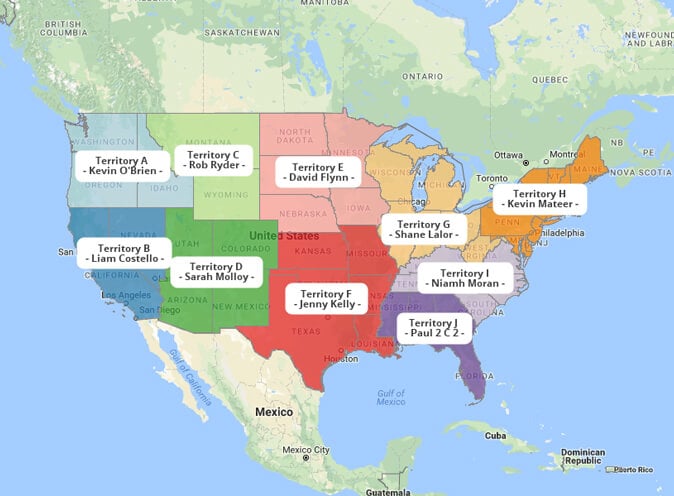
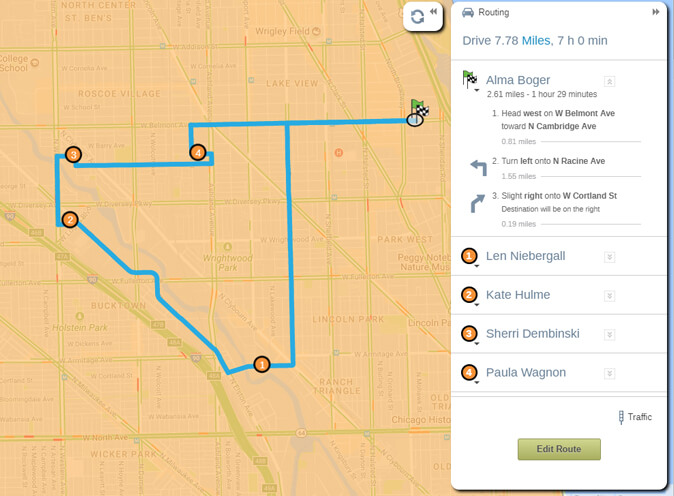
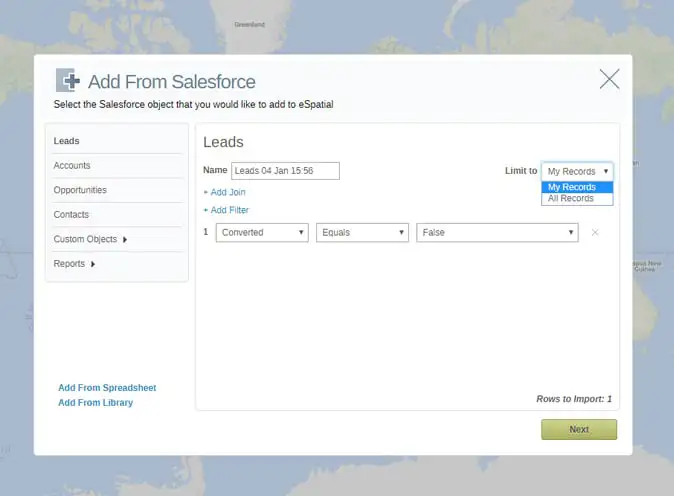
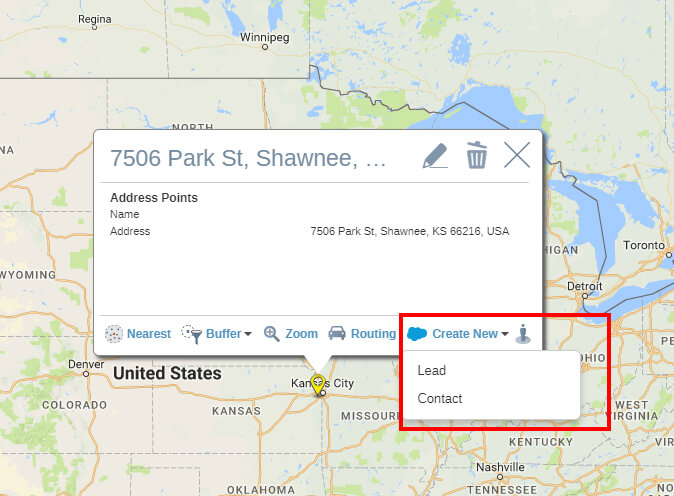
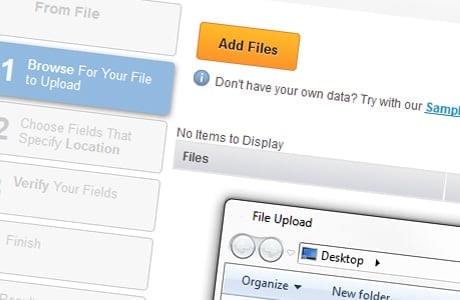
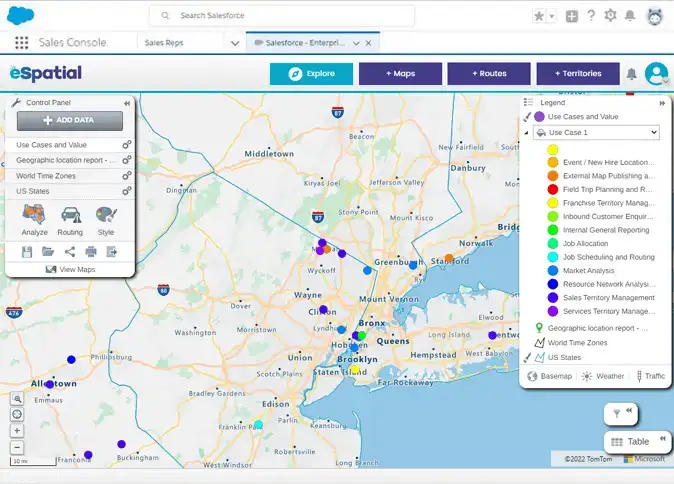
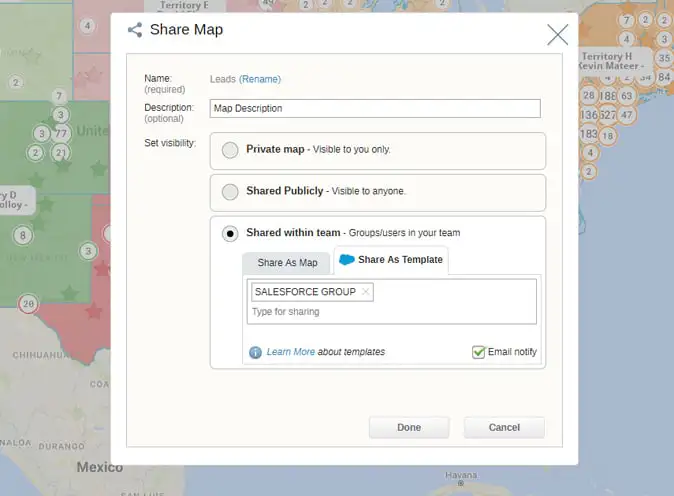
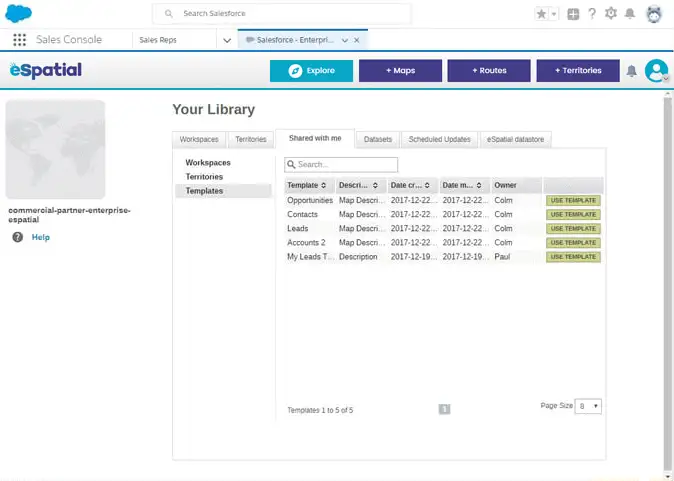
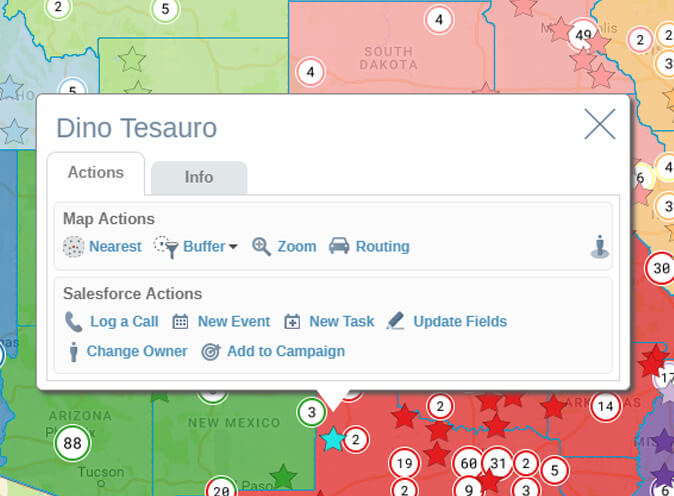
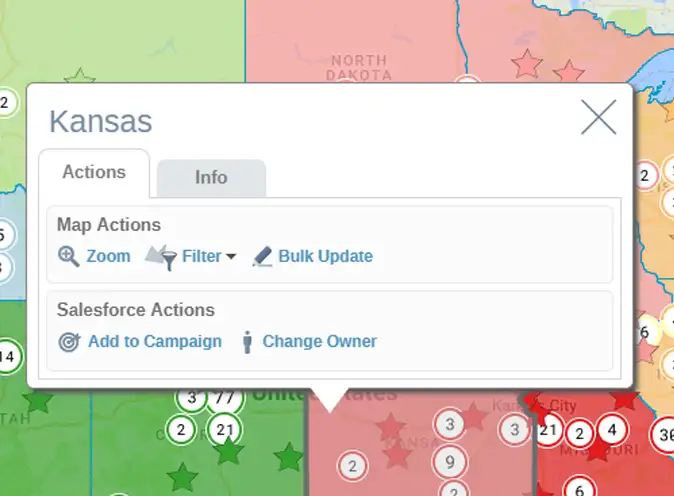
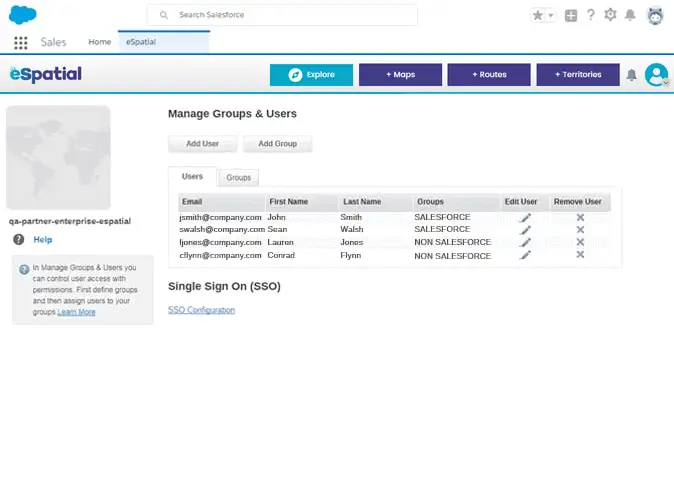
 by
by 